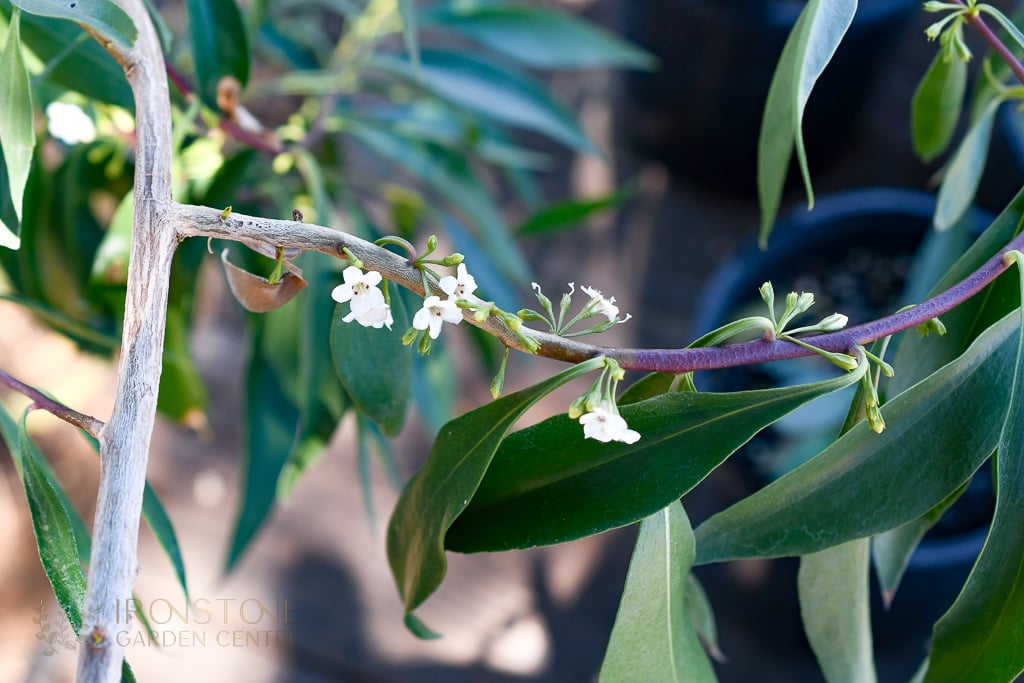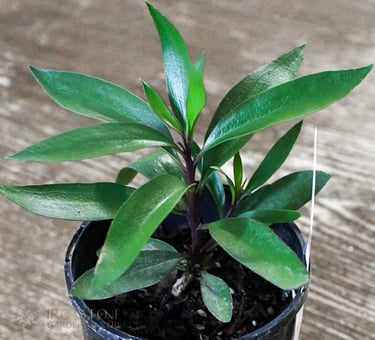Myoporum montanum: the Waterbush


Myoporum montanum, the waterbush, is an extraordinary species that seems decadent in the semi-arid climate of Winton, Queensland. This resilient and stunning tree maintains its vibrant greenery and delicate flowers throughout the scorching summer months. Myoporum montanum's ability to thrive in challenging environments is truly remarkable. Its deep root system taps into underground water reserves, allowing it to stay hydrated even during the hottest periods. It flourishes in various soil types, from sandy to rocky, and even clay soils, common in semi-arid regions. With its specialised leaves that minimise water loss, the waterbush efficiently maximises its water usage, ensuring it remains healthy and green.
The tree produces charming strings of small, white flowers that not only enhance its beauty but also play a crucial role in its reproductive cycle. Myoporum montanum is a medium-sized tree, typically reaching heights of 4 to 8 meters with a spread of about 3 to 5 meters. It has a rounded, bushy crown that creates a dense canopy, providing ample shade. The bark is smooth and grey, often developing shallow fissures as the tree matures. The leaves are lance-shaped, bright green, and slightly glossy, measuring about 4 to 10 cm long and 0.5 to 2 cm wide. They are arranged alternately along the branches and have a fine, smooth texture. The waterbush produces clusters of small, star-shaped white flowers, each about 5 to 8 mm in diameter, with five petals and a delicate, faintly sweet fragrance that attracts pollinators. Following the flowering season, which typically occurs in late winter to early summer, the tree bears small, berry-like fruits. These fruits start green and mature to a dark reddish-black colour, each about 5 to 10 mm in diameter.


Myoporum montanum is generally considered a compact and tidy tree. Its dense foliage and well-structured growth habit make it an attractive addition to gardens and landscapes. The tree does not shed excessive leaves or fruit, making maintenance relatively easy. The waterbush flowers from late spring to early summer, with its beautiful white flowers creating a striking contrast against the green leaves. The fruits typically develop soon after flowering and mature by late summer to early autumn.
Australia’s First Nations People have long valued Myoporum montanum. They used its various parts for medicinal purposes, including treatments for skin conditions and respiratory issues. The leaves and bark were integral to traditional remedies, and the tree itself played a role in indigenous cultural practices, managed carefully to ensure its sustainability.
While not currently threatened, Myoporum montanum faces habitat loss and land use changes. This species is locally endemic to Central Western Queensland and also found in other semi-arid and arid zones across Australia, thriving in open woodlands, along creek beds, and in rocky outcrops. The waterbush supports diverse wildlife, offering food and shelter to birds, insects, and small mammals. Its dense foliage provides nesting sites, making it a vital component of local ecosystems. Myoporum montanum is ideal for house blocks, yards, larger properties, and public spaces like parks and streets. Its moderate size, and spreading growth habit make it perfect for providing shade, enhancing liveability by offering a cool respite from the harsh sun.


We are thrilled to have Myoporum montanum growing and available for sale at our Garden Centre. This impressive species is both beautiful and resilient; we think it is a must-have for any garden or landscape. Visit us to bring home this remarkable tree and enjoy its many benefits. Come explore the wonders of Myoporum montanum at our Garden Centre andd see for yourself why this species is so special!


